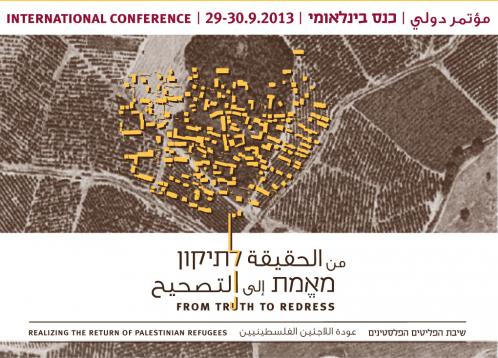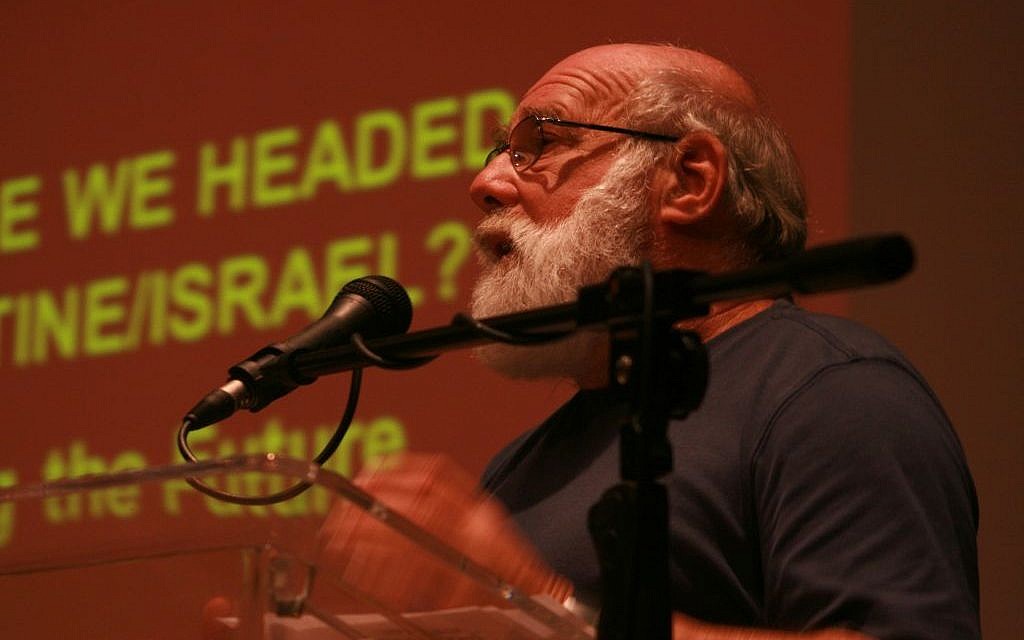Originally published by Ma’an News Agency on Ocrober 4, 2013.
TEL AVIV (Ma’an) — There are few topics that scare the Israeli public more than the potential realization of the Palestinian Right of Return. Israel’s New Historians increasingly acknowledge that Israel’s creation in 1948 was a direct result of a planned ethnic cleansing that led to the displacement of 800,000 Palestinians from 530 villages.
And yet there continues to be a wide-reaching, unspoken consensus across Israeli society that the return of the displaced indigenous Palestinian inhabitants of what became Israel and their descendants, today numbering around 4.5 million around the world, is not up for discussion.
As prominent Israeli columnist Gideon Levy asserted last Sunday in Tel Aviv, “Organizing a conference on the Right of Return is considered to be illegitimate by most Israelis. But we shouldn’t be afraid of that … Let me remind all of us that we had demons in our past just as scary that evaporated over the years … Now that we have gotten rid of earlier demons, we’re left with this demon that no one deals with: the Right of Return.”
It is precisely for this reason that the conference organized by Israeli organization Zochrot Sept. 29-30 at the Eretz Israel Museum in Tel Aviv was so ground-breaking. Entitled, “From Truth to Redress: Realizing the Return of the Palestinian Refugees,” it was one of the largest conferences to take place to date inside of Israel addressing the Palestinian Right of Return.
The conference aimed not merely to insist upon the legitimacy of the right of Palestinian refugees to return to their homeland, but also to examine in practice how such a return would take place. Because of Israel’s refusal to accept this right, a great deal of Palestinian discourse until recently has focused exclusively on insisting upon the legitimacy and necessity of return.
But if we accept the right as legitimate, a whole other host of questions emerge: Where will the refugees live? What kind of state will emerge? How will Palestinian society-in-exile re-emerge within the homeland? And finally, how will Jewish Israeli society come to terms with their new position in a state where they do not have a position of ethnic supremacy?

The conference builds on increasing momentum within Israel’s borders by Palestinian activists actively materializing the Right of Return. Israel is home to tens of thousands of Palestinians who were displaced from their villages in 1948 but remained inside the new state’s borders. Many of these communities ended up as refugees only mere miles from their original villages but were forbidden to return by the State of Israel.
In summer 2012, young Palestinian refugees originally from Iqrit returned to their mostly destroyed village and set up permanent residence. In response, Palestinians within Israel from other villages have also begun returning to their villages. Despite intense pressure from the Israeli state they have remained steadfast and present, refusing to be displaced from their ancestral lands yet again.
As Khulood Badawi, a Palestinian activist inside Israel, argued, “We need to take the model of Iqrit to other areas. We need to raise awareness by saying that we cannot just talk about the global Right of Return if we are not implementing Right of Return within Israel, while there are still displaced Palestinians here within Israel.”
Badawi stressed that the displaced Palestinians within Israel must use the advantages at their disposal, primarily citizenship rights and the ability to return to their displaced villages, to lead the way by showing Israelis, Palestinians, and the whole world that in fact return is possible. As she argued, “We cannot realize the global Right of Return without achieving the Right of Return of those displaced Palestinians within Israel.”
Zochrot director Liat Rosenberg told attendees that, “Return is a long and ongoing multifaceted process that includes not only physical return of refugees, but also the establishment of an actual society. It begins long before they come, and it will continue long after.” The conference thus addressed not only how return would take place, but also how Jewish Israeli society would come to accept it.

Zochrot has long been actively committed to challenging the collective, willed amnesia of many Jewish Israelis toward 1948. As conference organizers prominently reminded the audience throughout, the Eretz Israel Museum where the conference took place sits atop the destroyed Palestinian village of Sheikh Muwannis, official recognition for which Zochrot continues to fight. At the same time, as various panelists noted, Israeli Jewish society needs to understand that Palestinian return and decolonization does not entail Jewish ethnic cleansing.
The conference challenged both Israelis and Palestinians to rethink their ideas of return, offering complex visions of possibilities rarely discussed or even imagined. As some speakers noted, “return” means something different for every Palestinian refugee. While some may actually desire to return to their physical homes, others desire the ability to live anywhere in their homeland free from Israeli discrimination. Others crave merely the recognition of the historical crimes committed against them.
Palestinian architect and activist Shadi Habib Allah stressed that many Palestinians do want to return to their villages, and planning the geography of that return is of the utmost necessity. He presented architectural plans for the village center of al Lajun, offering a physical vision of return that “honored emotions,” as he explained through its innovative use of traditional Palestinian village design and notions of communal living. At the same time, the village offered a modern vision that would not insist upon a return to the path but hinted instead at a brighter future.
There are as many ideas of return as there are Palestinian refugees, a flexibility conference attendees frequently acknowledged. The decolonization of Israeli space through imagining Palestinian return means not returning to what was, but instead building a shared geographic future. And while the Israeli taboo on discussing the Palestinian Right of Return may not have been definitively shattered in these two days, that the conference even took place is a hopeful sign for the future.
As Israeli journalist Gideon Levy reminded the audience, “Treating (return) as something that should not be mentioned only exacerbates the problem … the only way to deal with it is first and foremost to talk about it.”